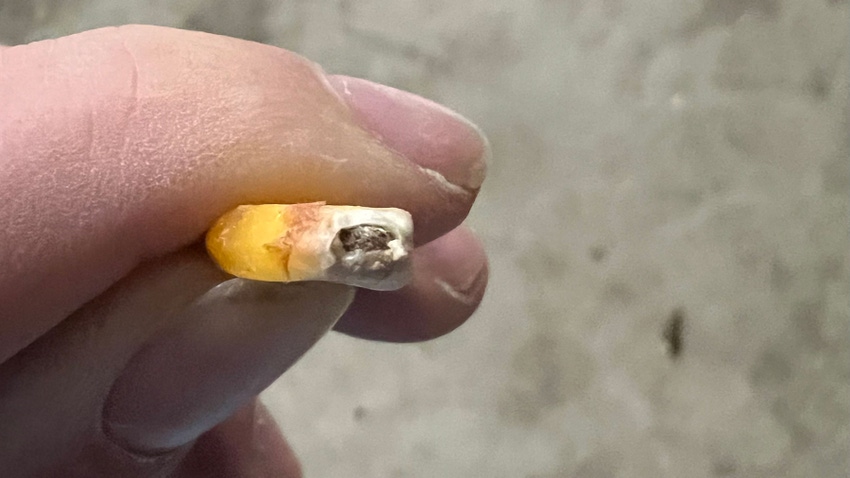October 31, 2023

by Dan Quinn
The phrase “black layer” is universal among farmers and agronomists for referring to when a corn plant has reached physiological maturity. This occurrence on the tip of the kernel appears because as a corn plant reaches maturity, cells at the tip of the kernel, or the cob attachment point, compress or collapse into a dense layer that visibly appears black.
Once black layer occurs, it is an indication that movement of sugars from the plant into kernels is no longer happening. One major function of cells at the tip of the kernel is to absorb and transfer plant sugars produced by the plant through photosynthesis into the kernel. When these cells are no longer functioning and the black layer is visible, the plant has reached physiological maturity.
Black layer and GDDs
In many years and environments, black layer formation, or physiological maturity, occurs naturally or timely. However, in other circumstances, it can seem to be either premature or delayed. When delayed, people often ask, “Will it ever occur?”
Although this is frustrating and can complicate corn harvest, yes, the corn plant will always reach black layer. It is just dictated by factors such as growing degree days, which are tied to temperature, and the sucrose or sugar supply to the developing kernel.
The main factor that influences the formation of black layer includes plant maturity and senescence caused by the accumulation of growing degree days. However, black layer formation can also occur prematurely due to severe photosynthetic stress, such as hail damage, foliar disease, sustained periods of very cool weather without a frost, or a lethal frost.
Cool weather, not smoke
Especially in northern and eastern Indiana in 2023, corn planting was later than normal due to early-season conditions. Plus, temperatures have been cooler than normal, which means growing degree day accumulation has been less than previous years. These factors likely led to slowed plant maturation, or black layer. They also slowed grain drydown. In addition, higher nitrogen rates and delayed fungicide applications may have played a role in sustained plant health and delayed maturation and drydown.
Many people wonder if wildfire smoke that occurred earlier this year contributed to slowed plant maturation and drydown in these areas. That is likely not the case.
Haze and poor air quality from wildfire smoke can impact plant photosynthesis both negatively and positively. It is very complex, and determining its exact impact on crops can be difficult. However, it is important to note that wildfire smoke does not directly influence how rapidly plants progress through growth stages and toward maturity.
Quinn is the Purdue Extension corn specialist. Email him at [email protected].
You May Also Like




